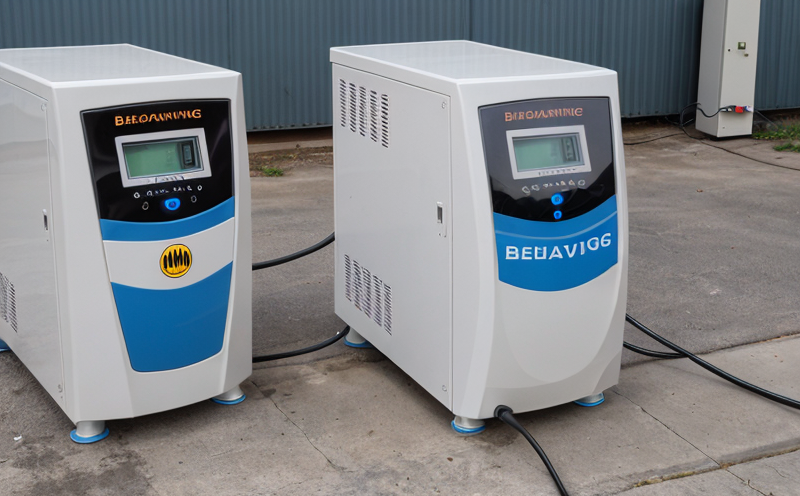KS C IEC 62133 Charging and Discharging Testing of Portable Rechargeable Batteries
The Korean Standard (KS) C IEC 62133 is a crucial guideline for ensuring the safety, performance, and durability of portable rechargeable batteries. This standard sets out comprehensive requirements to evaluate the charging and discharging behavior of these batteries. The test covers various scenarios that simulate real-world conditions, providing manufacturers with critical data to enhance product quality.
The testing protocol outlined in this standard is designed to identify potential risks during battery operation, ensuring they are safe for consumer use. It evaluates parameters such as overcharge protection, overdischarge protection, and temperature control mechanisms. These tests are essential because portable rechargeable batteries are used in a wide range of devices including mobile phones, laptops, power tools, medical equipment, and more.
The IEC 62133 standard is widely recognized for its stringent safety measures, which have been adopted by numerous countries around the world. Compliance with this standard ensures that products meet international quality benchmarks, thereby enhancing consumer trust and satisfaction. For companies developing or producing portable rechargeable batteries, conforming to this standard can significantly reduce regulatory compliance costs while also improving product reliability.
The testing process involves rigorous procedures to simulate typical charging and discharging conditions under controlled laboratory settings. This approach allows for accurate assessment of the battery's performance characteristics without exposing actual devices to unnecessary risk. By following these standardized protocols, laboratories can provide reliable data that help manufacturers optimize their designs and improve overall product safety.
To ensure comprehensive evaluation, tests cover multiple aspects like charging efficiency, self-discharge rate, cycle life, and more. These metrics are vital for understanding how well a battery will perform over time, especially under demanding conditions such as high temperatures or deep discharges. Understanding these parameters helps in selecting appropriate materials and structures that enhance durability while maintaining optimal performance.
In summary, the KS C IEC 62133 Charging and Discharging Testing of Portable Rechargeable Batteries plays a pivotal role in ensuring product safety and reliability across diverse applications. By adhering to this standard, manufacturers can produce safer, more efficient batteries that meet global market demands.
Applied Standards
The KS C IEC 62133 Charging and Discharging Testing of Portable Rechargeable Batteries is primarily aligned with the International Electrotechnical Commission (IEC)'s standard, IEC 62133. This international standard provides detailed guidelines on how to conduct thorough testing to ensure compliance with safety requirements.
- IEC 62133: This standard focuses specifically on portable rechargeable batteries used in various electronic devices.
- Korean Standard (KS): In South Korea, the equivalent national standard is KS C IEC 62133, which follows the same guidelines as the international version but is tailored to local requirements.
Both versions emphasize the importance of electrical safety and operational parameters during charging and discharging cycles. The standards cover a wide range of tests including internal resistance measurement, short-circuit protection, overcharge protection, and more.
The adoption of these standards ensures consistent quality across different regions, promoting safer use of portable rechargeable batteries worldwide. Compliance with IEC 62133 helps manufacturers meet regulatory requirements in various countries, including South Korea, Europe, North America, and Asia-Pacific nations.
Scope and Methodology
| Test Parameter | Description | Methodology |
|---|---|---|
| Overcharge Protection | Battery should not sustain damage or degradation due to prolonged charging above the nominal voltage limit. | Cycle batteries through a series of charge cycles, monitoring for any signs of failure during extended periods at high voltages. |
| Overdischarge Protection | Battery must resist physical and chemical deterioration resulting from deep discharges below specified limits. | Subject batteries to full discharge until they reach the lowest permissible voltage, then recharge them multiple times to observe stability. |
| Cycling Capability | Evaluate how many complete charge-discharge cycles a battery can undergo before performance drops significantly. | Perform defined numbers of cycles under specified conditions and measure capacity retention at each stage. |
| Internal Resistance Measurement | Determine the internal resistance to assess efficiency losses during charging and discharging processes. | Use specialized instruments to measure changes in resistance throughout various charge-discharge phases. |
| Circuit Protection | Verify that all necessary circuit protections (e.g., overcurrent, thermal) are effective. | Simulate fault conditions and check if protective circuits activate correctly without causing damage. |
The methodology described above ensures a thorough evaluation of each battery's capabilities under different stress scenarios. These tests not only enhance safety but also provide valuable insights into the longevity and performance of batteries used in portable electronic devices.
Use Cases and Application Examples
- Smartphones: Ensures that mobile phones can safely handle rapid charging while maintaining battery health over extended usage periods.
- Laptops: Helps in designing efficient power management systems to extend device lifespan without compromising on performance.
- Medical Devices: Guarantees critical equipment remains operational even during prolonged use, especially in emergency situations.
- Power Tools: Allows manufacturers to build tools that meet strict safety standards while offering reliable performance for demanding work environments.
- Battery packs for electric vehicles: Ensures safe and efficient charging solutions that comply with global regulations.
- Solar energy storage systems: Validates the reliability of batteries used in renewable energy applications, enhancing sustainability efforts.
- Backup power supplies: Provides assurance that essential devices remain operational during blackouts or other emergencies.
The results from these tests provide valuable information for improving battery design and manufacturing processes. They help identify areas where improvements can be made to enhance product durability, reduce failures, and increase user satisfaction.





